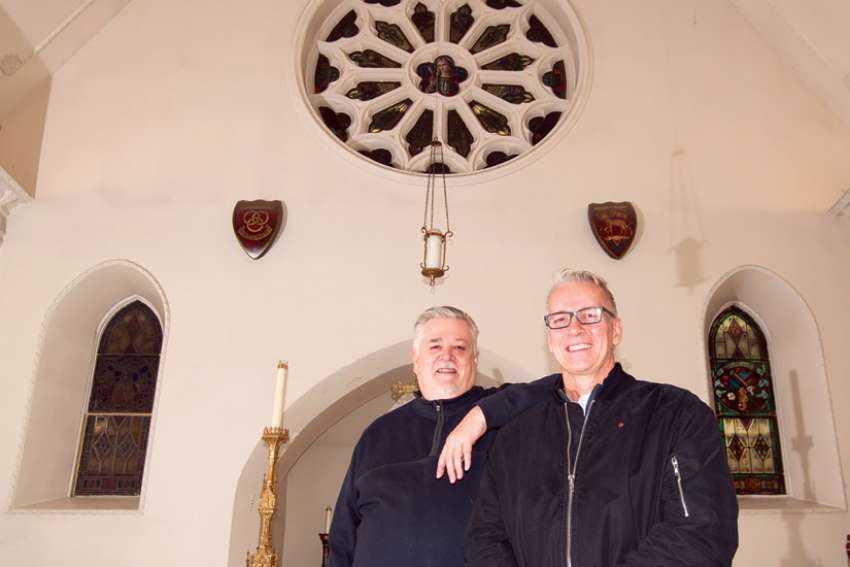“A lot of people think it’s done,” said cathedral rector Fr. Michael Busch. “But only the interior is substantially done. It’s in no way complete.”
Although you won’t hear or see them during Christmas celebrations, most days there are between 40 and 60 workers on-site at St. Michael’s. Construction material and equipment still occupies most of the open space around the church. Inside the sanctuary there are statuary niches still being finished, stonework still needs grouting, paint needs touching up.
“A lot of those little odds and ends we’re still finishing up within the cathedral proper,” said Marc Ferguson, vice president of preconstruction for lead contractor Buttcon Ltd.
But behind the scenes the work goes far beyond finishing touches. During demolition of the old ceiling, workers found rotting wood in the structure of the main roof.
“There is no risk of immediate structural failure,” said Ferguson. “However, if not fixed, the rot will continue and lead to catastrophic failure in the future.”
In some ways the cathedral basilica is now operating as a kind of movie set. In areas everybody can see, the church looks wonderful. In the sacristy, the vestiary and the passageways out of view, there’s still plenty of plywood, orange tape and men in construction boots.
Work on the “back of house” areas will begin to wind down in the spring, Ferguson said. By then the donor plaques should be up near the front entrance and crews will have constructed a thoroughfare between the rectory and the cathedral, “so Fr. Michael won’t have to be walking outside through the snow to get from the rectory to the cathedral,” Ferguson said.
But there are some big pieces of the overall plan that are on hold until they can be properly financed — renovations to St. John’s Chapel, construction of the crypt chapel downstairs and significant construction necessary for the landscaping outside.
It will take $3 million in donations to greenlight work on St. John’s Chapel, an intimate liturgical space that has been treasured by generations of cathedral goers.
Most days when Busch opens his mail he is humbled and inspired by the generosity of people throughout the archdiocese who send him cheques.
“We’ve had some substantial donors who have come in and given $1 million without even being asked,” said Busch. “Just this morning I opened two cheques from people who watched on TV and read articles in The Register and wanted to give something — you know, $300. It’s continually edifying.”
For the most part the cathedral renovations have been financed by small donors, although large donations have been both welcome and necessary.
Busch has every confidence St. John’s Chapel and the crypt chapel will be built and soon.
As work continues, Ferguson watches people’s reactions as they enter the refurbished church.
“To see their reaction when they come out from underneath that balcony. They look up and see that ceiling and see all the beautiful finishes. That’s a good sense of satisfaction,” he said.
Ferguson and Buttcon are in it for the long haul. Not only are they cementing a relationship which they hope will lead to work on some of the Archdiocese of Toronto’s other historic properties, but Ferguson has discovered a whole new dimension to his vocation as a construction manager.
“I did work at the legislative assembly of Ontario for 4 1/2 years. That was a romanesque style of architecture; this is a gothic revival kind of architecture. That’s where the similarities between those two jobs ends,” he said. “This one goes a step further, because it has the religious side to it.”
Over five years of work, Ferguson has watched artists and craftspeople put their soul into a very special job.
“It’s the pride of being part of it. You take a look at the nature of the architecture, the significance of the architecture. You have the magnitude of the job itself and then you have this added layer of the religion — the theological side of things,” he said.
“It’s not like putting in kitchen cupboards where in 10-to-15 years somebody is going to come in and rip them all out again,” said Busch. “They’re putting in something they know is going to be here 100 years from now. That lends a whole new level to the kind of work they do.”


